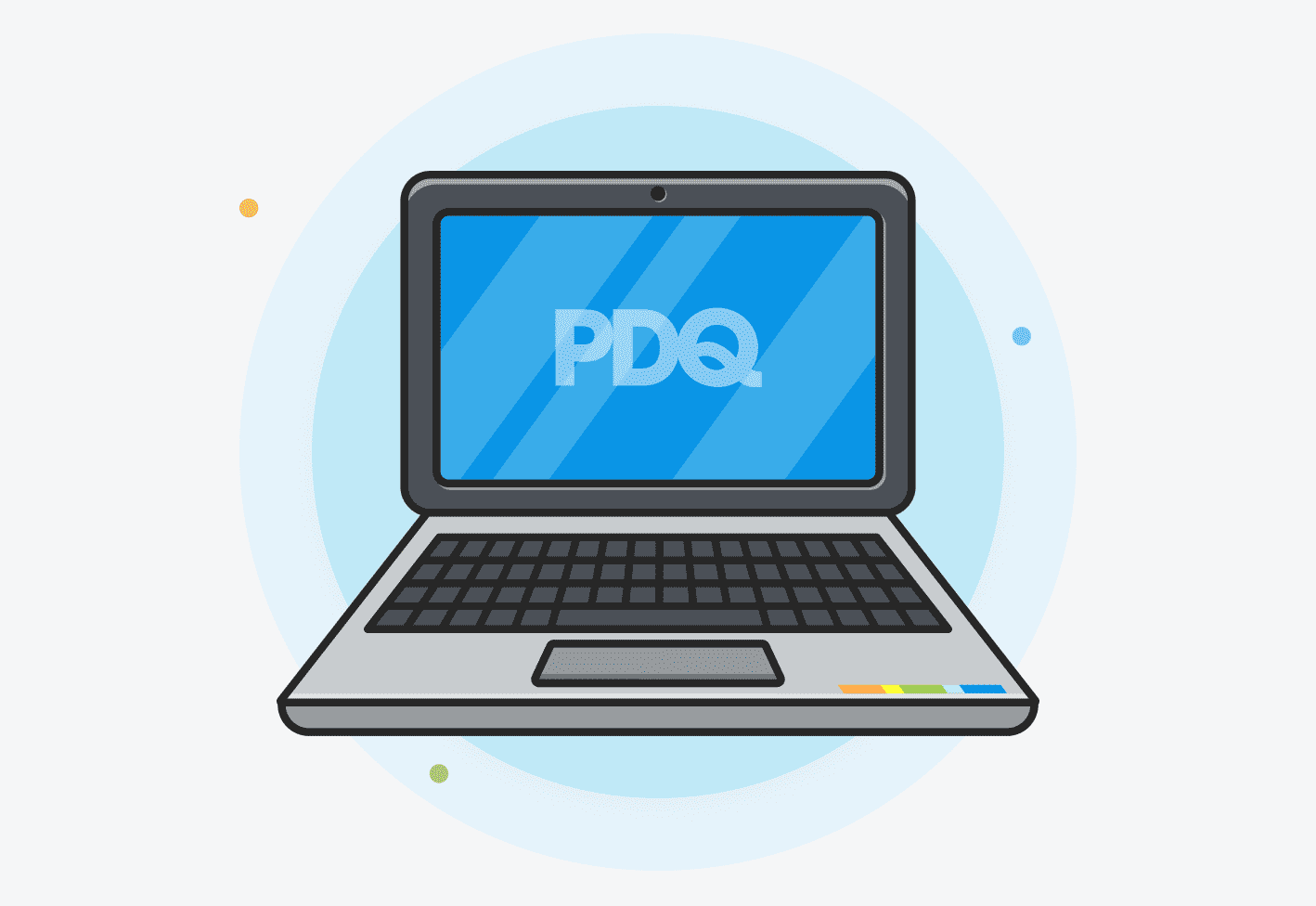When it comes to software deployment, you might be debating between an on-prem or a remote solution. The exasperating answer? It depends. If you manage remote devices, you should consider a cloud-based deployment tool — but we’ll break down other factors you should consider, too.
It’s true that organizations are spending big bucks on remote solutions available on the cloud, and for good reason. If you want lower overheads, greater scalability, and ease of getting started, cloud software deployment tools could be best for you. But if you want more control and customization, on-prem solutions might be a better fit. Since nothing is simple in IT, we’ll walk through all the pros and cons to help you decide on a software deployment solution that works for your organization.
What does an on-prem software deployment solution offer?
On-prem software deployment solutions are hosted and run on in-house hardware, like computers or servers. To host on-premises solutions, companies must purchase licenses or a copy of the software.
In on-prem models, everything is handled internally — from setup and configuration to managing end-to-end lifecycles of hardware and software. This includes IT infrastructure like servers and network appliances, applications, and databases.
Security is also handled on prem as well. Organizations must maintain physical and network security to keep data and equipment safe.
What does a remote software deployment solution offer?
Remote software deployment solutions are on-demand applications that are accessible via an internet connection. By using an agent for remote deployment, they can help manage computer endpoints whether they’re in the office, at employees’ homes, or anywhere with the internet.
Remote solutions are sometimes called cloud solutions or Software-as-a-Service (SaaS). Typically built using cloud computing resources, they are hosted on public cloud platforms owned by service providers like Amazon Web Services, Microsoft Azure, and Google Cloud Platform.
Cloud software deployment solutions are fully managed and maintained by the solution provider, and organizations pay only for usage. It’s like ordering pizza at a restaurant. You don’t have to deal with messy ingredients or watch the oven constantly to make sure that your crust is baked to perfection. And you don’t even have to clean up after. All you need to do is sit back and enjoy that cheesy, savory goodness — AKA using a software deployment tool that you don’t have to build or maintain yourself.
On-prem vs. remote solutions: Pros and cons
So when should you use a remote deployment tool? If you’re managing remote or off-site devices and you don’t want to use a VPN, a remote tool will work best. But there are other considerations, too.
In general, remote deployment tools are less expensive than setting up and operating an on-prem solution, and they scale more easily if your company is growing quickly. But on-prem tools offer you much more in-depth control and customization. We’ll break down the details behind these deciding factors.
Security and availability
On-prem: On-premises software live in self-managed, private environments that are often perceived as more secure. But this also means that organizations are entirely responsible for their own security measures, from setting up firewalls to regular software patching. They must also design redundancies to serve as backups in case of technical disruptions that could cause significant downtime.
Cloud: With any cloud solution, a third-party provider is responsible for ensuring security and service availability. They are hosted on public cloud platforms that have invested heavily in security with robust safeguards and features in place. Some cloud services come with specialized security features that can be expensive for organizations to implement themselves. Service-level agreements between customers and solution providers help ensure solution availability and uptime.
Control and customization
On-prem: In on-prem environments, companies have complete control over their data, hardware, and software. They can configure, upgrade, or change their server hardware, applications, and workflows to meet their needs. Systems can also be designed to meet compliance standards around data protection and sharing.
Cloud: Cloud solutions may offer only a specific set of customizable options that are built into the product design. This may be enough for some sysadmins, but not for others with more complex needs. It’s like building your own pizza from a restaurant menu with only 10 toppings to choose from versus making one yourself with any ingredient you want. When using services like cloud storage, you also get less technical control. For example, data encryption keys could reside with the cloud provider.
Cost
On-prem: In general, on-premises software rely on environments that are costlier to set up and operate. On-prem environments require servers, continuous power supply, and physical space to store the hardware. Organizations would also require dedicated IT resources to support and manage on-prem infrastructure.
Cloud: Using cloud solutions means that organizations save on the costs of setting up or running physical infrastructure or hardware. Companies pay for using the software while the solution providers take care of maintenance, upgrades, and technical support. But for organizations with heavy workloads that involve processing and analyzing huge amounts of data, cloud services can be more costly than on-prem options.
Scalability
On-prem: When you’re managing on-prem physical servers, it can be difficult to scale your operations. This expansion usually requires purchasing and deploying new servers to support future growth — and in-house IT staff to handle the upgrades and expansions.
Cloud: On-demand cloud solutions are more scalable. Service plans can be modified easily to cater to increased usage. This allows organizations to grow quickly with fewer logistical constraints.
Different strokes for different folks
On-prem: If you already have the necessary IT infrastructure in place and most employees are working in person at the office, an on-prem software deployment solution would be a natural choice. And if you've set up your corporate VPN, you can even manage remote devices.
Cloud: Cloud or remote solutions can be used to manage any device as long as it’s connected to the internet. For sysadmins supporting hybrid environments, you can use a remote software deployment solution to support on-prem and remote machines from one platform.
On-prem vs. remote solutions: Which is better for your organization?
Whether you opt for an on-prem or a cloud solution depends on factors like the kind of industry and users you support, your existing IT infrastructure, and your IT management style.
Moving your entire operations to the cloud can feel very overwhelming. Using a SaaS-based or cloud-based solution can provide critical advantages without involving a complete overhaul of your IT architecture.
Industry
Some industries like banking and government are more tightly regulated than others. Air-gapped organizations with strict compliance policies may not be allowed to use public cloud services or solutions.
Workforce
If you’re supporting a fully remote or hybrid workforce, cloud-based solutions are an ideal way to centrally manage employee devices, no matter where they’re located.
Existing infrastructure
Organizations that have already invested heavily in existing on-prem IT infrastructure and equipment may prefer to build on what they have rather than pivot to the cloud.
Resources
Do you have the time and budget to set up, upgrade, or configure in-house hardware and software? Or do you need a solution that you can just install and get started on right away? If the latter, we recommend a cloud-based deployment solution.
IT management approach
Some IT teams prefer to have full control over their corporate infrastructure and networks. By choosing to build on prem, they can decide how to design their setup, what technologies to use, and how it’s implemented to solve specific problems. Love being in control? Stick with on-prem deployment solutions.
How to choose the right remote cloud-based solution for your business
If you’ve decided to go with a remote deployment solution, you’ve still got to pick one of the many different types of cloud-based solutions in the market today. When choosing the right one for your business, here’s a list of factors to keep in mind.
Ease of setup and use
Avoid solutions that require complex configurations or integrations with other software to do what you need it to do. Better to know up front what functions you need — and choose the service that can do it all.
Reliability and performance
Set clear benchmarks and enforceable clauses in your contract or service-level agreements to hold solution providers accountable for reliability and performance. If you’re going to trust a third party, make sure they can do everything you need them to.
Security features
Look for solution providers that use established security standards and frameworks, and make sure to review their System and Organization Controls (SOC) reports.
Free trials or demos
Always try before you buy. Explore key features and functionalities through free trials and demos to see if the solution meets your requirements.
Technical support
The quality and availability of technical support matters. Besides well-developed documentation, you should have ready access to support staff if needed.
Whether devices are in the office or remote, sysadmins need ways to manage their endpoint environments more efficiently.
If going on prem is your jam, you can use PDQ Inventory to keep an eye on your systems and PDQ Deploy to make sure that endpoints stay up to date and running smoothly. If some or all of your user machines are remote, PDQ Connect allows you to manage and support your fleet from the cloud. Easy as pie (or pizza).





